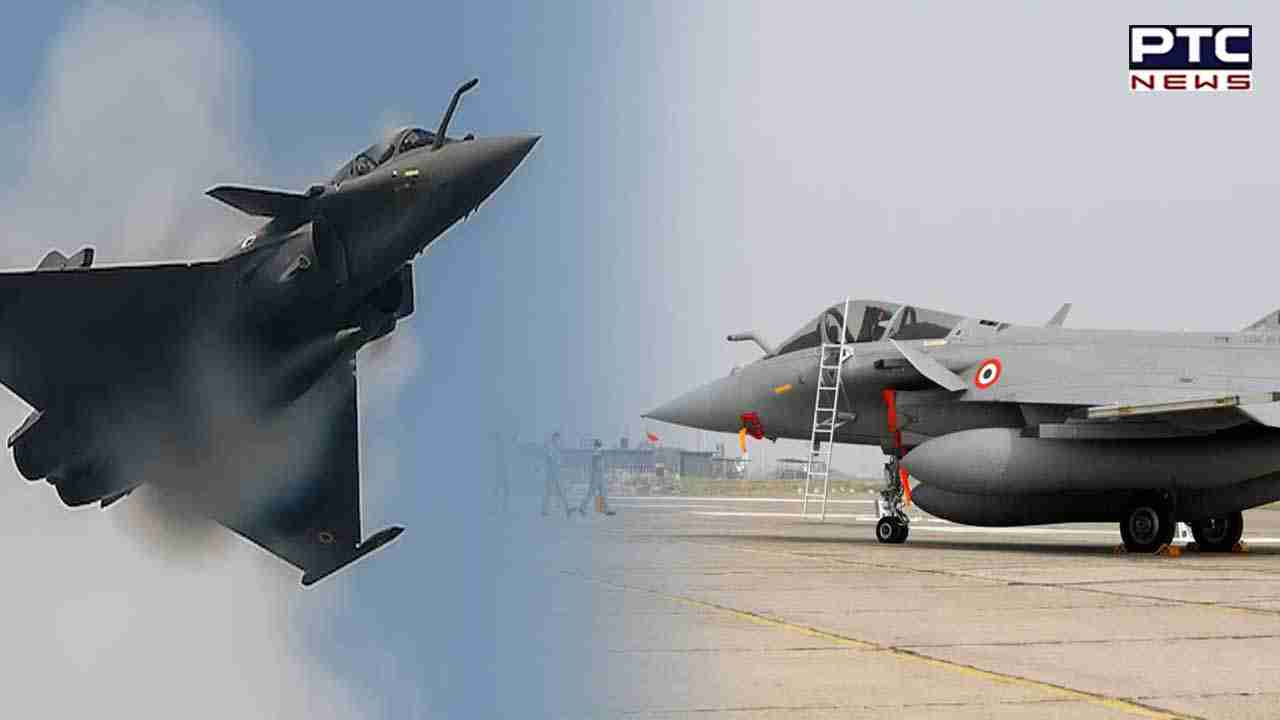

IAF seeks integration of Indian weapons on Rafale Jets in major 'Make in India' boost
New Delhi, July 23: The Indian Air Force (IAF) has taken a significant stride towards bolstering the 'Make in India' initiative in the defense sector and potentially opening up the global market for indigenous weapons. In a notable development, the IAF has requested Dassault Aviation, the French firm that manufactures Rafale combat aircraft, to integrate domestically produced weapons like the 'Astra' air-to-air missile onto the Rafale jets.
The Rafale fighter jet is in service with several countries, including India, France, Egypt, Qatar, Greece, Croatia, UAE, and Indonesia. Additionally, many other nations have expressed interest and placed orders for these advanced planes.

Defense officials revealed that the IAF has approached the original equipment manufacturer, Dassault Aviation, with a proposal to integrate Indian-made weapons like the Smart Anti Airfield Weapon (SAAW) and the Astra missile, both developed by the Defense Research and Development Organization (DRDO), onto the Rafale, which has been in service with the IAF since 2020.
Notably, the IAF is also looking to incorporate various indigenous weapons developed by private sector firms into the Rafale in the near future, including long-range glide bombs. Industry insiders predict that the capability and pricing of these Indian weapon systems could potentially create a significant global market once integrated with the Rafale.
The Indian weapon systems have already been successfully integrated into the Su-30 MKI combat aircraft and the indigenous Light Combat Aircraft (LCA) Tejas. With 36 Rafale fighter jets already operational, India has expressed its intent to purchase an additional 26 Rafale marine aircraft for use by the Indian Navy.
The IAF's senior leadership has been actively promoting the use of indigenous solutions to meet their operational requirements and enhance self-reliance, particularly in times of conflict. The ongoing border standoff with China has further accelerated the process of indigenization, with many weapon systems being targeted for domestic development.
Among the Indian weapon systems, the Astra air-to-air missiles stand out for their capability to strike targets up to a range of 100 Km. Plans are already in motion to extend this range to 160 Kms in the upcoming Astra Mark 2, with a further upgraded version expected to achieve a strike range of 300 Kms. Similarly, the SAAW is capable of hitting targets at a range of 100 Km and beyond, with advanced versions currently under development.
The officials confirmed that private sector companies have also made significant strides in developing long-range missiles and bombs that can be equipped on the Rafale, further enhancing the aircraft's operational capabilities.
In conclusion, the IAF's request to integrate indigenous weapons on the Rafale fighter jets marks a crucial step in India's quest for self-reliance in defense production. With the successful integration of Indian weapon systems, the Rafale is expected to gain a competitive edge in the global market while showcasing the prowess of Indian defense technology on an international stage.
Also Read: Bangladesh bus accident: Overloaded bus plunges into pond, 17 killed and 35 injured
- With inputs from agencies
